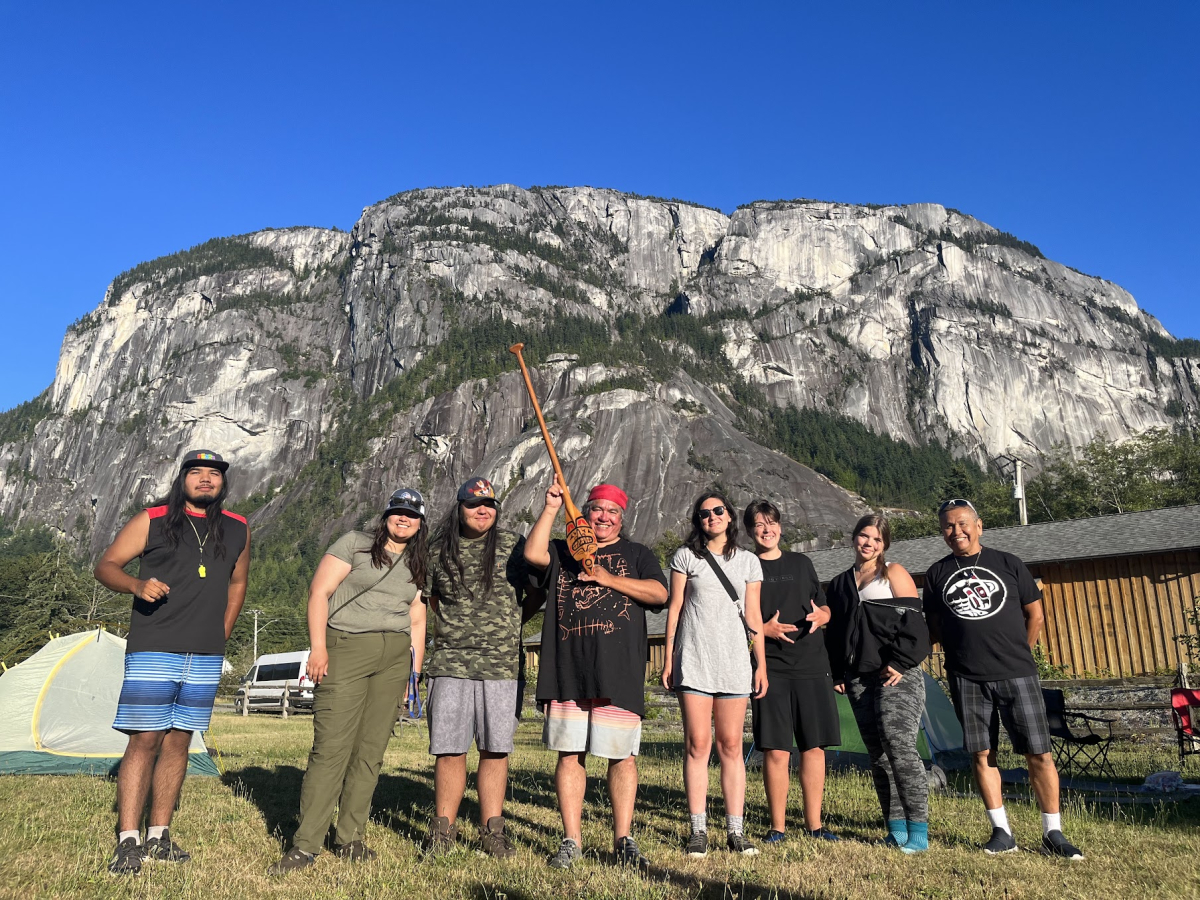Support strong Canadian climate journalism for 2025
Jaci Gilbert was only 13 when wildfire thrust itself into her life. It was 2017 and her community, the Tsq̓escén̓ First Nation, near 100-Mile House in the B.C. interior, was being evacuated ahead of flames sweeping across the territory.
Community members piled anxiously into school buses to wait in nearby evacuation centres for the fire to pass. For some, concern about the fate of their homes and land was exacerbated because the buses and cots triggered traumatic memories from residential schools, she recalled in a recent interview with Canada's National Observer.
"You're putting all of these factors [together] and it's like, “How do we not get traumatized by an evacuation?," she said.
The fire's impact on her community left her determined to learn how her people's ancestral cultural burning practices could help prevent a repeat disaster.
Cultural burning is the use of controlled fire to generate new growth and prevent large, destructive wildfires. Long used by Indigenous people throughout what is now B.C. and other parts of Canada, the practice was criminalized in 1874 and remains tightly regulated by provincial laws.
However, as Canada suffers record-breaking wildfires, a growing number of Indigenous people and wildfire advocates are calling for those restrictions to be removed and cultural burning supported as a key tool to prevent disasters by reducing the amount of deadwood in forests.
"[We need] more cultural burning on the ground," said Joe Gilchrist, a member of the Skeetchestn First Nation and one of B.C.'s top experts on the practice. "[We need] to make the area safe from wildfire because of climate change. It's getting worse and worse — drier, hotter, windier — and the only thing we can control is the fuel.”
While Indigenous cultural-burning practices have been severely restricted by colonial laws, even the use of prescribed burns by industry and government to create wildlife habitat and tree plantations has plummeted since the late 1990s, fueling larger and more destructive fires. That’s a problem, experts say, with many calling for governments to support widespread cultural burning to mitigate dangerous wildfires.
But legal restrictions aside — and there are many — roughly 150 years of criminalization means there are few people who know how to practice cultural burning. It's a problem Gilchrist is trying to fix, most recently by organizing a canoe trip to teach Indigenous youth — including Gilbert — how to work with fire.
With support from Outward Bound, which provided canoes and guides, and Simon Fraser University's Centre for Dialogue, the journey saw Gilchirst and six young people from First Nations across the B.C. interior paddle and camp for a week in Átl'ḵa7tsem/Howe Sound, near Vancouver, B.C.
Two years in the making, the trip was canceled last year due to wildfires. Even this year, weather threatened to scupper Gilchrist's efforts as extreme July heat in the B.C. interior forced the group to relocate to the coast at the last minute.
While Gilbert said she supported the shift, “we don’t want anyone to overheat,” she remarked. She hopes to one day learn from Gilchrist in the interior, where he best knows the land.
“It would have been really interesting to see what he was talking about, around us,” she said. “I hope we can one day do it somewhere [Gilchrist] can really show us what he means on the landscape.”
The trip was meant to help "the kids to change their mind about fire and cultural burning" and teach them "how the land was really supposed to be stewarded," Gilchrist explained. The group paddled a few hours each day, then spent the afternoons and evenings learning about everything from wildfire mitigation and firefighting to how fire can support traditional medicines and foods like huckleberries.
His lessons also focused on making Gilbert and her fellow students more comfortable with the flames and aware of what the B.C.'s fire-managed ecosystems looked like when cultural burning was commonplace. He hopes to make the trip an annual event, with the goal of teaching up to 30 youth each season.
"I was really happy with the response from the young ones. They're really enthusiastic about learning. They made it really easy." He added that the act of canoeing and the time it offered to connect with the land without cell phones — or even cell coverage — was also "really great."
Appreciation for the lessons and each other, without phones, was a common theme among participants who spoke with Canada's National Observer.
"This trip has been amazing — I loved every second of it. Even early mornings before I had my coffee," joked Maliki Williams, another participant.
For Gilbert, who also works for the First Nations Emergency Services Society, the trip left her brimming with ideas for future programs.
Wildfire fighting is overwhelmingly dominated by white men, she said, leaving scarce safe spaces for women and LGBTQIA+ people. Moreover, hiring practices have long favoured young and athletic people. Wildfire fighting agencies have also tended to prioritize short-term contracts, making it difficult for people to build a career in the field.
"It's so enlightening to see people be so open to learning about fire, believe that fire should be on the landscape and specifically stewarded by Indigenous people," she said. "And now we're building these programs to [help make] our entire province safer. And hopefully, we can keep going into a national scope."






Comments